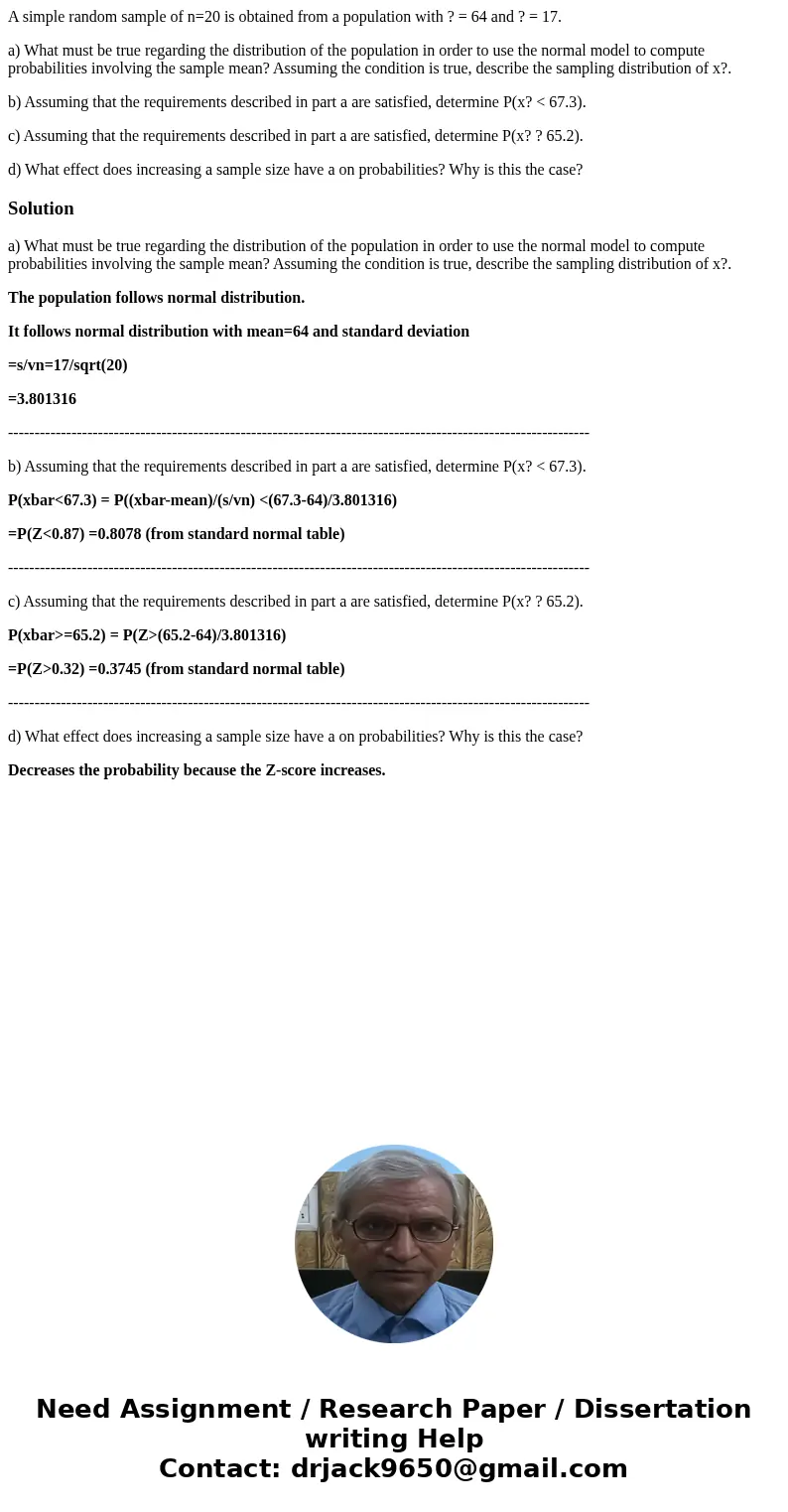A simple random sample of n20 is obtained from a population
A simple random sample of n=20 is obtained from a population with ? = 64 and ? = 17.
a) What must be true regarding the distribution of the population in order to use the normal model to compute probabilities involving the sample mean? Assuming the condition is true, describe the sampling distribution of x?.
b) Assuming that the requirements described in part a are satisfied, determine P(x? < 67.3).
c) Assuming that the requirements described in part a are satisfied, determine P(x? ? 65.2).
d) What effect does increasing a sample size have a on probabilities? Why is this the case?
Solution
a) What must be true regarding the distribution of the population in order to use the normal model to compute probabilities involving the sample mean? Assuming the condition is true, describe the sampling distribution of x?.
The population follows normal distribution.
It follows normal distribution with mean=64 and standard deviation
=s/vn=17/sqrt(20)
=3.801316
--------------------------------------------------------------------------------------------------------------
b) Assuming that the requirements described in part a are satisfied, determine P(x? < 67.3).
P(xbar<67.3) = P((xbar-mean)/(s/vn) <(67.3-64)/3.801316)
=P(Z<0.87) =0.8078 (from standard normal table)
--------------------------------------------------------------------------------------------------------------
c) Assuming that the requirements described in part a are satisfied, determine P(x? ? 65.2).
P(xbar>=65.2) = P(Z>(65.2-64)/3.801316)
=P(Z>0.32) =0.3745 (from standard normal table)
--------------------------------------------------------------------------------------------------------------
d) What effect does increasing a sample size have a on probabilities? Why is this the case?
Decreases the probability because the Z-score increases.

 Homework Sourse
Homework Sourse